Monitoring Systems and Numerical Models to Study Coastal Sites †
Abstract
:1. Introduction
2. Materials and Methods
2.1. Study Site and Monitoring Station
2.2. Monitoring System
- (1)
- continuous detection of the measured environmental parameters using suitable sensors and devices installed in the station;
- (2)
- remote pre-processing of raw data for decoding from binary files in a user-friendly format to be easily managed by users;
- (3)
- wireless data transmission via GSM/GPRS devices to connect the MG station to a Data Acquisition Center;
- (4)
- data storage on a dedicated server on which authorized users can visualize and download data also by remote connection.
2.3. Analysis of Monitored Data
3. Numerical Modelling
3.1. Calibration
3.2. Oil Spilling Runs
4. Results and Discussion
5. Conclusions
Author Contributions
Funding
Conflicts of Interest
References
- Armenio, E.; Ben Meftah, M.; De Padova, D.; De Serio, F.; Mossa, M. Monitoring System in Mar Grande Basin (Ionian Sea). In Proceedings of the 2018 IEEE International Workshop on Metrology for the Sea; Learning to Measure Sea Health Parameters (MetroSea), Bari, Italy, 8–10 October 2018; pp. 104–109. [Google Scholar] [CrossRef]
- Armenio, E.; Ben Meftah, M.; Bruno, M.F.; De Padova, D.; De Pascalis, F.; De Serio, F.; di Bernardino, A.; Mossa, M.; Leuzzi, G.; Monti, P. Semi enclosed basin monitoring and analysis of meteo, wave, tide and current data. In Proceedings of the IEEE Workshop on Environmental, Energy, and Structural Monitoring, Bari, Italy, 13–14 June 2016. [Google Scholar] [CrossRef]
- Armenio, E.; De Serio, F.; Mossa, M.; De Padova, D. Monitoring system for the sea: Analysis of meteo, wave and current data. In Proceedings of the IMEKO TC19 Workshop on Metrology for the Sea, MetroSea, Naples, Italy, 11–13 October 2017; pp. 143–148. [Google Scholar]
- Armenio, E.; De Serio, F.; Mossa, M. Analysis of data characterizing tide and current fluxes in coastal basins. Hydrol. Earth Syst. Sci. 2017, 21, 3441–3454. [Google Scholar] [CrossRef]
- De Serio, F.; Mossa, M. Environmental monitoring in the Mar Grande basin (Ionian Sea, Southern Italy). Environ. Sci. Pollut. Res. 2016, 23, 12662–12674. [Google Scholar] [CrossRef] [PubMed]
- Mossa, M. Field measurements and monitoring of wastewater discharge in sea water. Estuar. Coast. Shelf Sci. 2006, 68, 509–514. [Google Scholar] [CrossRef]
- De Carolis, G.; Adamo, M.; Pasquariello, G.; De Padova, D.; Mossa, M. Quantitative characterization of marine oil slick by satellite near-infrared imagery and oil drift modelling: The Fun Shai Hai case study. Int. J. Remote Sens. 2013, 34, 1838–1854. [Google Scholar] [CrossRef]
- Fay, J.A. The Spread of Oil Slicks on a Calm Sea; Springer: Boston, MA, USA, 1969; pp. 53–63. [Google Scholar]
- Huang, J.C.; Monastery, F.C. Review of the State of the Art of Oil Spill Simulation Models. Available online: https://ci.nii.ac.jp/naid/10013314715/ (accessed on 30 March 2019).
- Huang, J.C. A review of the state of the art of oil spill fate/behavior models. In Proceedings of the International Oil Spill Conference, San Antonio, TX, USA, 28 February–3 March 1983; pp. 313–322. [Google Scholar]
- Beegle-Krause, J. General NOAA oil modeling environment (GNOME): A new spill trajectory model. Int. Oil Spill Conf. Proc. 2001, 2001, 865–871. [Google Scholar] [CrossRef]
- De Dominicis, M.; Pinardi, N.; Zodiatis, G.; Lardner, R. MEDSLIK-II, a Lagrangian marine oil spill model for short-term forecasting—Part I: Theory. Geosci. Model Dev. 2013, 6, 1851–1869. [Google Scholar] [CrossRef]
- Sven, A.; Uiboupin, R.; Verjovkina, S.; Raudsepp, U. SAR imagery and Seatrack Web as decision making tools for illegal oil spill combating—A case study. In Proceedings of the 2010 IEEE/OES Baltic International Symposium (BALTIC), Riga, Latvia, 24–27 August 2010; pp. 1–6. [Google Scholar]
- Daniel, P. Operational forecasting of oil spill drift at Météo-France. Spill Sci. Technol. Bull. 1996, 3, 53–64. [Google Scholar] [CrossRef]
- Korotenko, K.A.; Bowman, M.J.; Dietrich, D.E. Modeling of the circulation and transport of oil spills in the Black Sea. Oceanology 2003, 43, 367–378. [Google Scholar]
- Reed, M.; Gundlach, E. A Coastal Zone Oil Spill Model: Development and Sensitivity Studies. Oil Chem. Pollut. 1989, 5, 411–449. [Google Scholar] [CrossRef]
- Perivoliotis, L.; Nittis, K.; Charissi, A. An integrated servicefor oil spill detection and forecasting in the marine environment. In Proceedings of the Fourth International Conference on EuroGOOS, Brest, France, 6–9 June 2005; pp. 381–387. [Google Scholar]
- MIKE 3 Flow Model: Hydrodynamic Module—Scientific Documentation. DHI Software. Available online: https://www.google.com.tw/url?sa=t&rct=j&q=&esrc=s&source=web&cd=2&ved=2ahUKEwjQqYKhlqnhAhXJKqYKHa4yAkMQFjABegQIBRAC&url=http%3A%2F%2Fmanuals.mikepoweredbydhi.help%2F2017%2FCoast_and_Sea%2FMIKE3HD_Scientific_Doc.pdf&usg=AOvVaw0pxx_Ab_XdVAv7oPyUsvVY (accessed on 30 March 2019).
- Elhakeem, A.; Elshorbagy, W.; Chebbi, R. Oil Spill Simulation and Validation in the Arabian Gulf with Special Reference to the UAE Coast. Water Air Soil Pollut. 2007, 184, 243–254. [Google Scholar] [CrossRef]
- Kankara, R.S.; Subramanian, B.R. Oil Spill Sensitivity Analysis and Risk Assessment for Gulf of Kachchh, India, using Integrated. Modeling J. Coast. Res. 2007, 23, 1251–1258. [Google Scholar] [CrossRef]
- Vethamony, P.; Sudheesh, K.; Babu, M.T.; Jayakumar, S.; Manimurali, R.; Saran, A.K.; Sharma, L.H.; Rajanb, B.; Srivastavab, M. Trajectory of an oil spill off Goa, eastern Arabian Sea: Field observations and Simulations. Environ. Pollut. 2007, 148, 438–444. [Google Scholar] [CrossRef]
- Elshorbagy, W.; Elhakeem, A. Risk assessment maps of oil spill for major desalination plants in the United Arab Emirates. Desalination 2008, 228, 200–216. [Google Scholar] [CrossRef]
- Verma, P.; Wate, S.R.; Devotta, S. Simulation of impact of oil spill in the ocean-a case study of Arabian Gulf. Environ. Monit. Assess. 2008, 146, 191–201. [Google Scholar] [CrossRef] [PubMed]
- Lončar, G.; Beg Paklar, G.; Janekovic, I. Numerical Modelling of Oil Spills in the Area of Kvarner and Rijeka Bay (The Northern Adriatic Sea). J. Appl. Math. 2012, 2012, 497936. [Google Scholar] [CrossRef]
- Lončar, G.; Leder, N.; Paladin, M. Numerical modelling of an oil spill in the northern Adriatic. Oceanologia 2012, 54, 143–173. [Google Scholar] [CrossRef]
- De Padova, D.; Mossa, M.; Adamo, M.; De Carolis, G.; Pasquariello, G. Synergistic use of an oil drift model and remote sensing observations for oil spill monitoring. Environ. Sci. Pollut. Res. 2017, 24, 5530–5543. [Google Scholar] [CrossRef]
- Christiansen, B.M. 3D Oil Drift and Fate Forecasts at DMI. Available online: www.fargisinfo.com/referanser/LinkedDocuments/D050.pdf (accessed on 30 March 2019).
- De Padova, D.; De Serio, F.; Mossa, M.; Armenio, E. Investigation of the current circulation offshore Taranto by using field measurements and numerical model. In Proceedings of the 2017 IEEE International Instrumentation and Measurement Technology Conference (I2MTC), Turin, Italy, 22–25 May 2017. [Google Scholar] [CrossRef]
- De Serio, F.; Mossa, M. Analysis of mean velocity and turbulence measurements with ADCPs. Adv. Water Resour. 2015, 81, 172–185. [Google Scholar] [CrossRef]
- De Serio, F.; Mossa, M. Meteo and Hydrodynamic Measurements to Detect Physical Processes in Confined Shallow Seas. Sensors 2018, 18, 280. [Google Scholar] [CrossRef] [PubMed]
- Rodi, W. Examples of calculation methods for flow and mixing in stratified fluids. J. Geophys. Res. Ocean. 1987, 92, 5305–5328. [Google Scholar] [CrossRef]
- Galperin, B.; Orszag, S.A. Large Eddy Simulation of Complex Engineering and Geophysical Flows; Cambridge University Press: New York, NY, USA, 1993; pp. 3–36. [Google Scholar]
- Wilmott, C.J. On the validation of models. Phys. Geogr. 1981, 2, 184–194. [Google Scholar] [CrossRef]
- Stolzenbach, K.D.; Madsen, E.E.; Adams, A.; Pollack, A.; Cooper, C. A Review and Evaluation of Basic Technique for Predicting the Behavior of Surface Oil Slicks. Available online: https://repository.library.noaa.gov/view/noaa/9623/noaa_9623_DS1.pdf (accessed on 30 March 2019).
- Audunson, T. The fate and weathering of surface oil from the Bravo blow out. Mar. Environ. Res. 1980, 3, 35–61. [Google Scholar] [CrossRef]
- Reed, M.; Turned, C.; Odulo, A. The Role of Wind and Emulsification in Modelling Oil Spill and Surface Drifter Trajectories. Spill Sci. Technol. Bull. 1994, 1, 143–157. [Google Scholar] [CrossRef]
- Spaulding, M.; Kolluru, V.; Anderson, E.; Howlett, E. Application of three-dimensional oil spill model (WOSM/OILMAP) to hindcast the Braer spill. Spill Sci. Technol. Bull. 1994, 1, 23–35. [Google Scholar] [CrossRef]
- Parenzan, P. Il Mar Piccolo e il Mar Grande di Taranto. Thalass. Salentina 1969, 3, 19–34. [Google Scholar]
- Parenzan, P. Puglia Marittima; Congedo Editore: Galatina, Lecce, Italy, 1983. [Google Scholar]
- Matarrese, A.; Mastrototaro, F.; Maiorano, P.; Tursi, A. Mapping of the benthic communities in the Taranto seas using side-scan sonar and an underwater video camera. Chem. Ecol. 2004, 20, 377–386. [Google Scholar] [CrossRef]

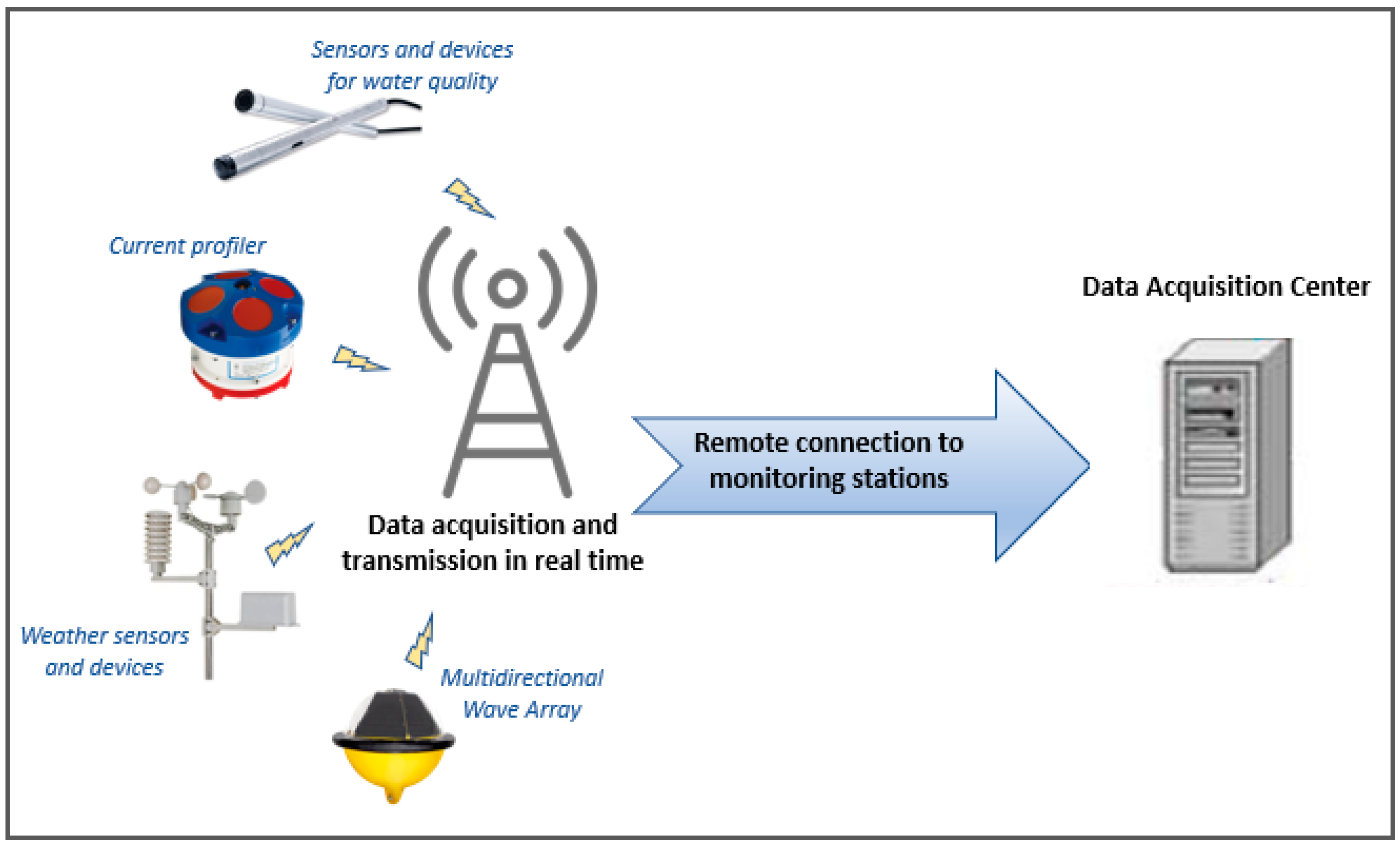
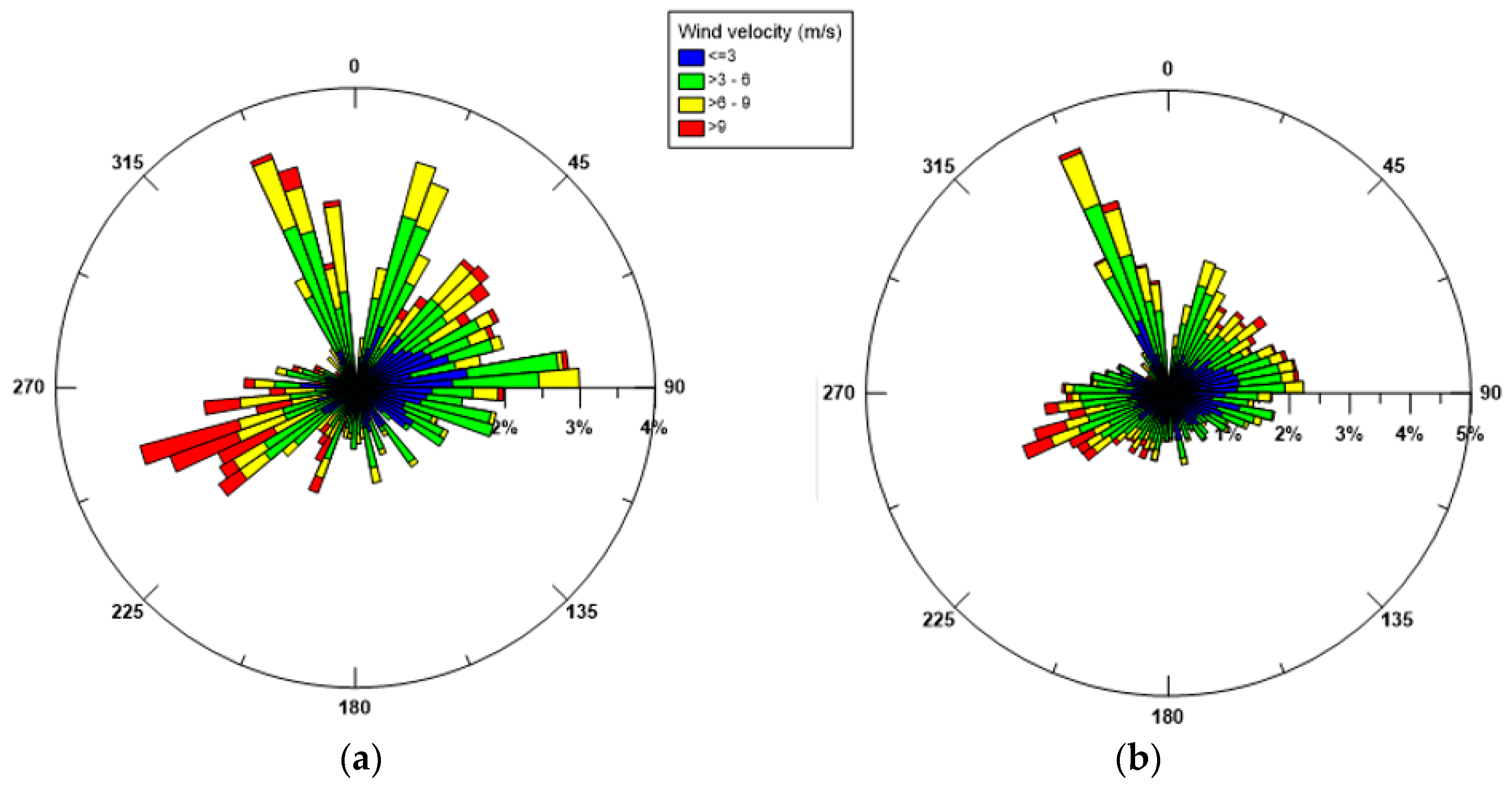

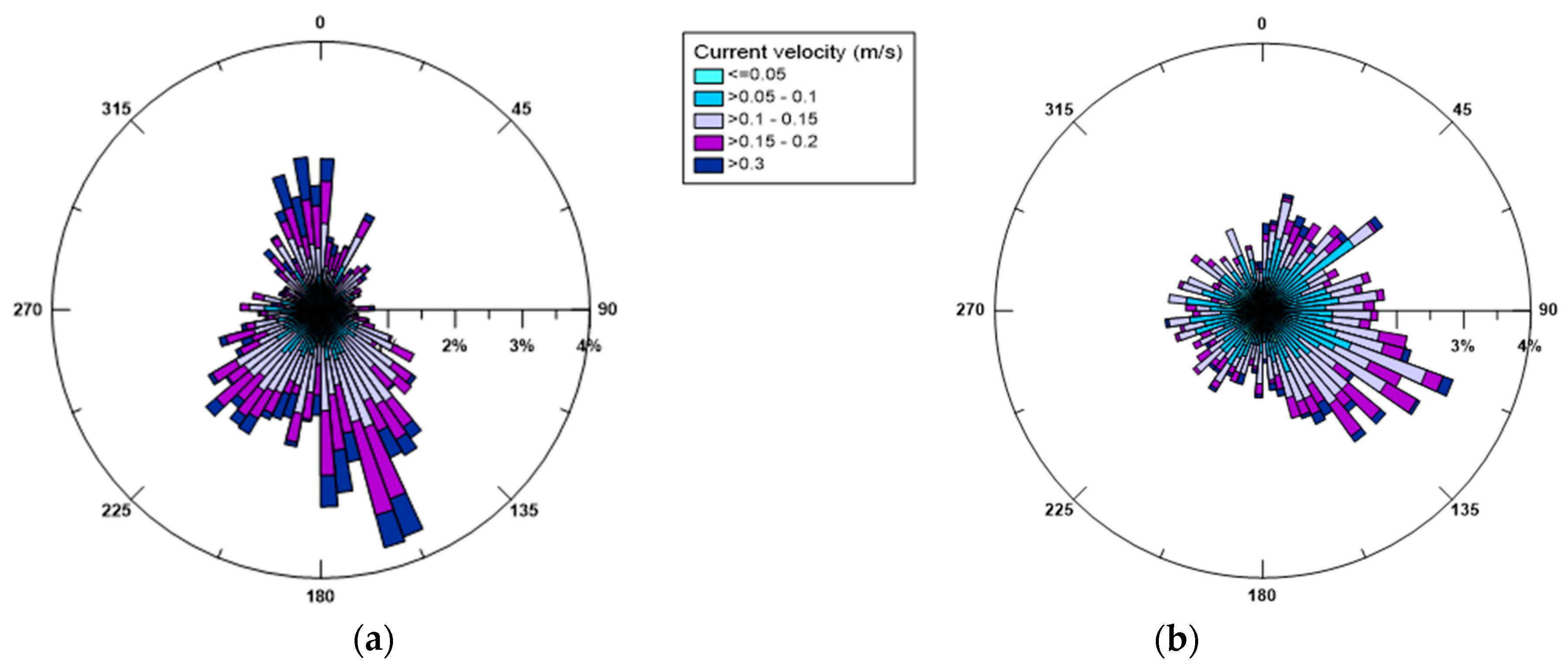
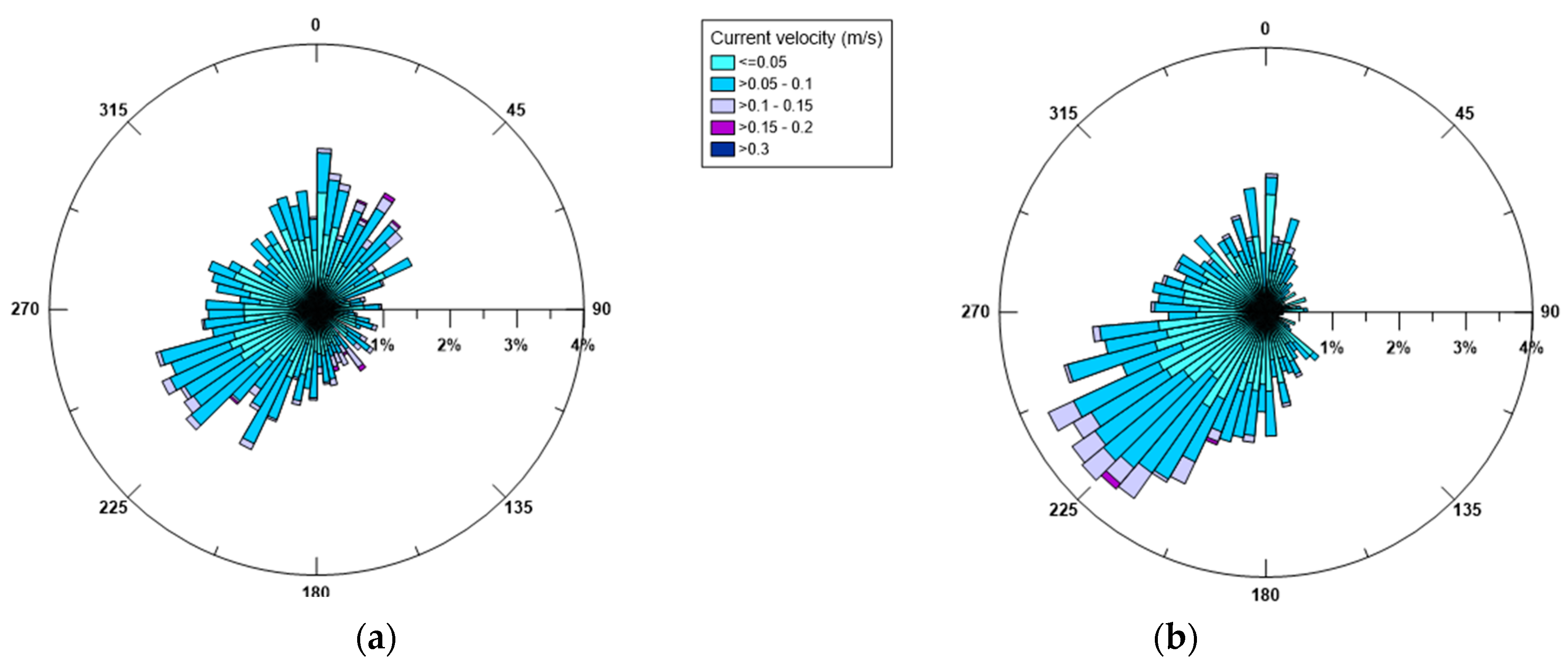

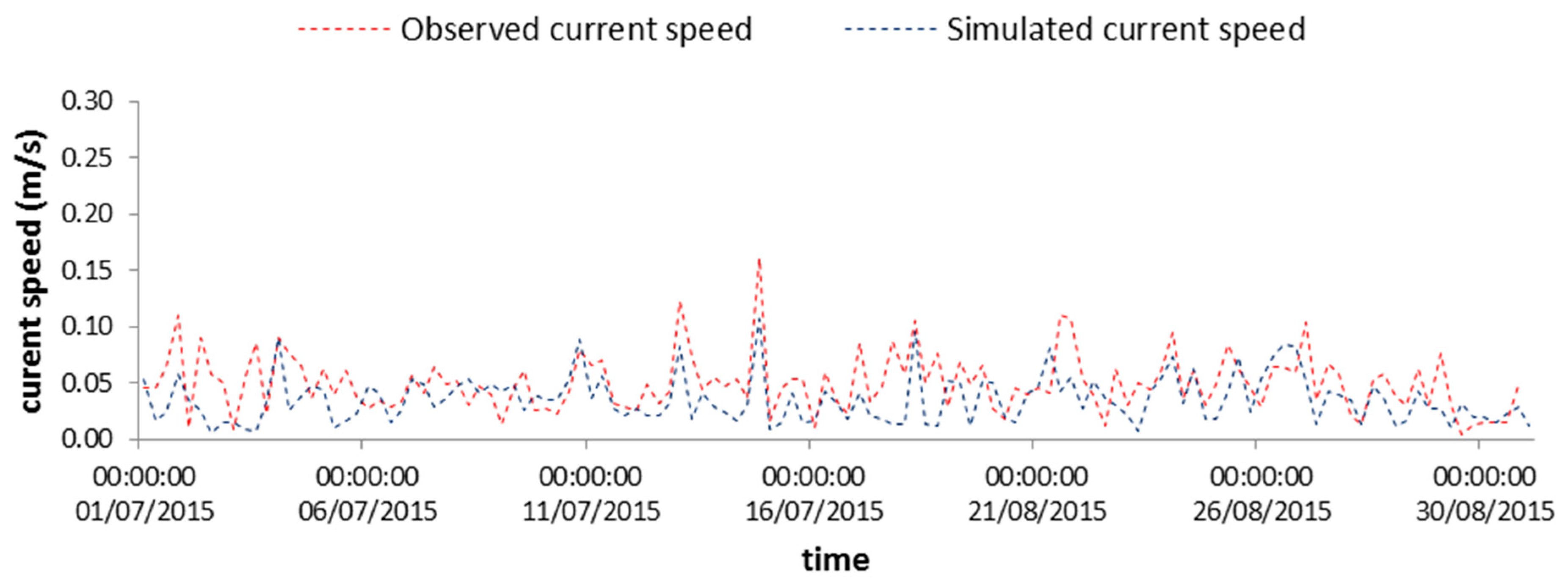
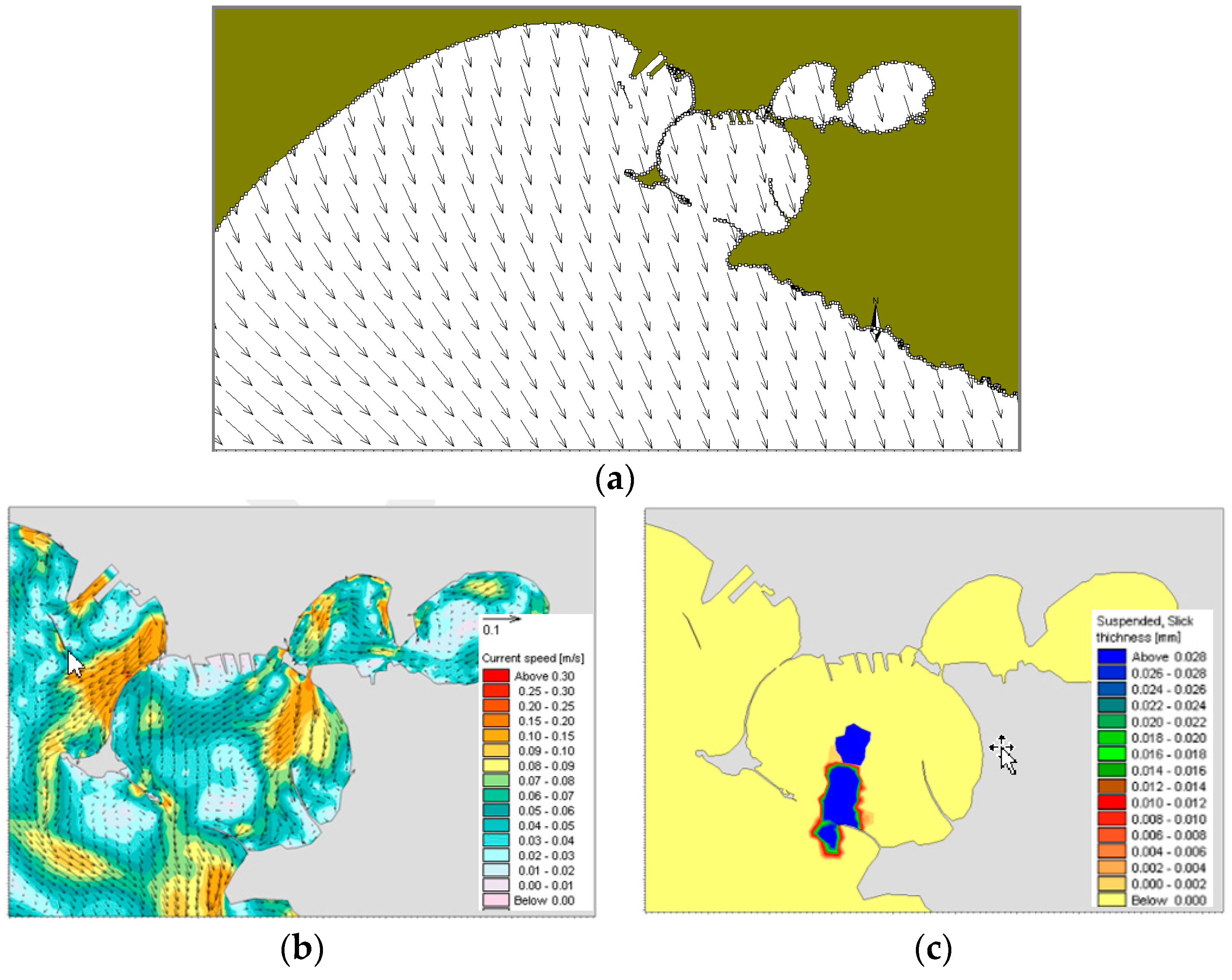
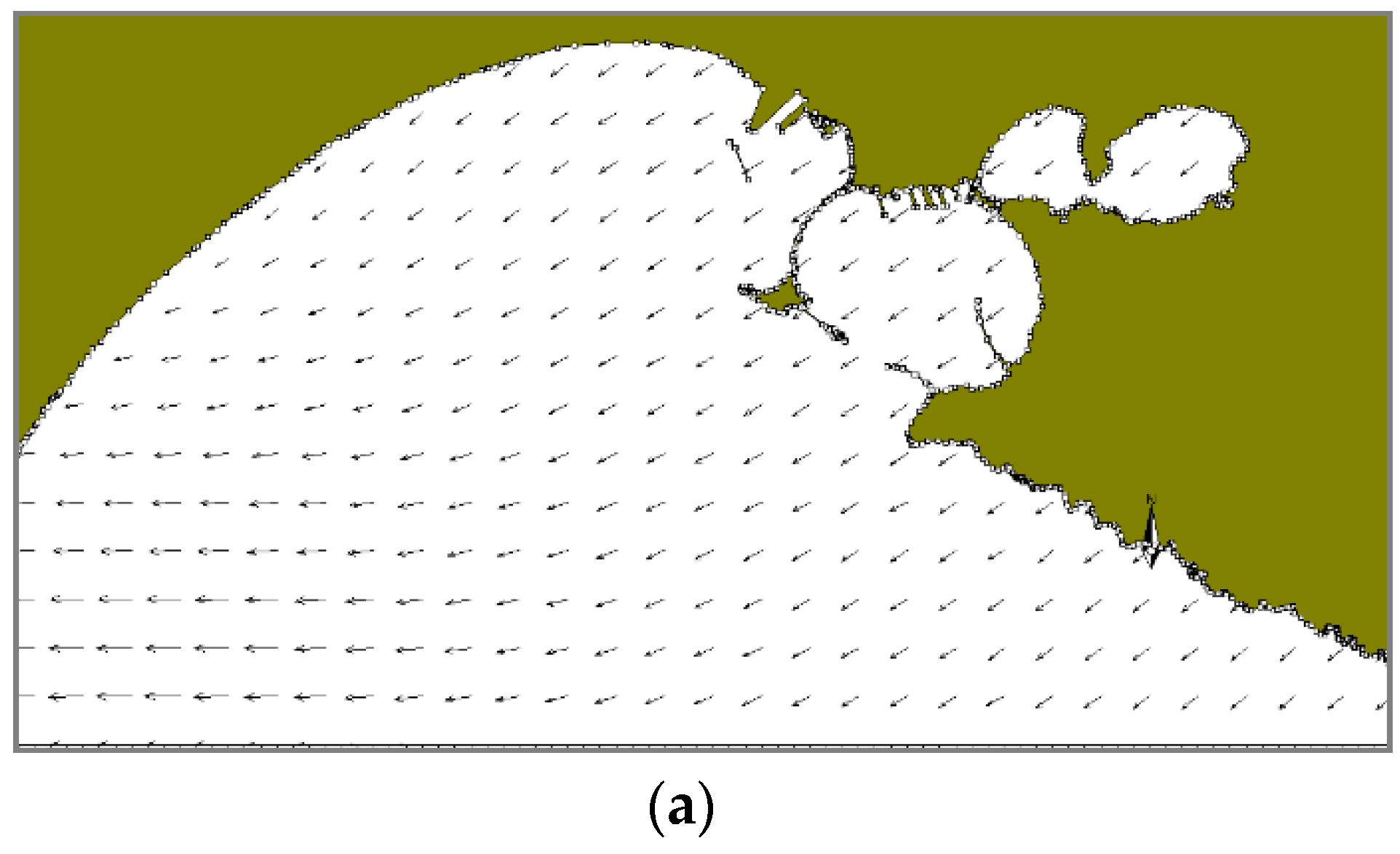

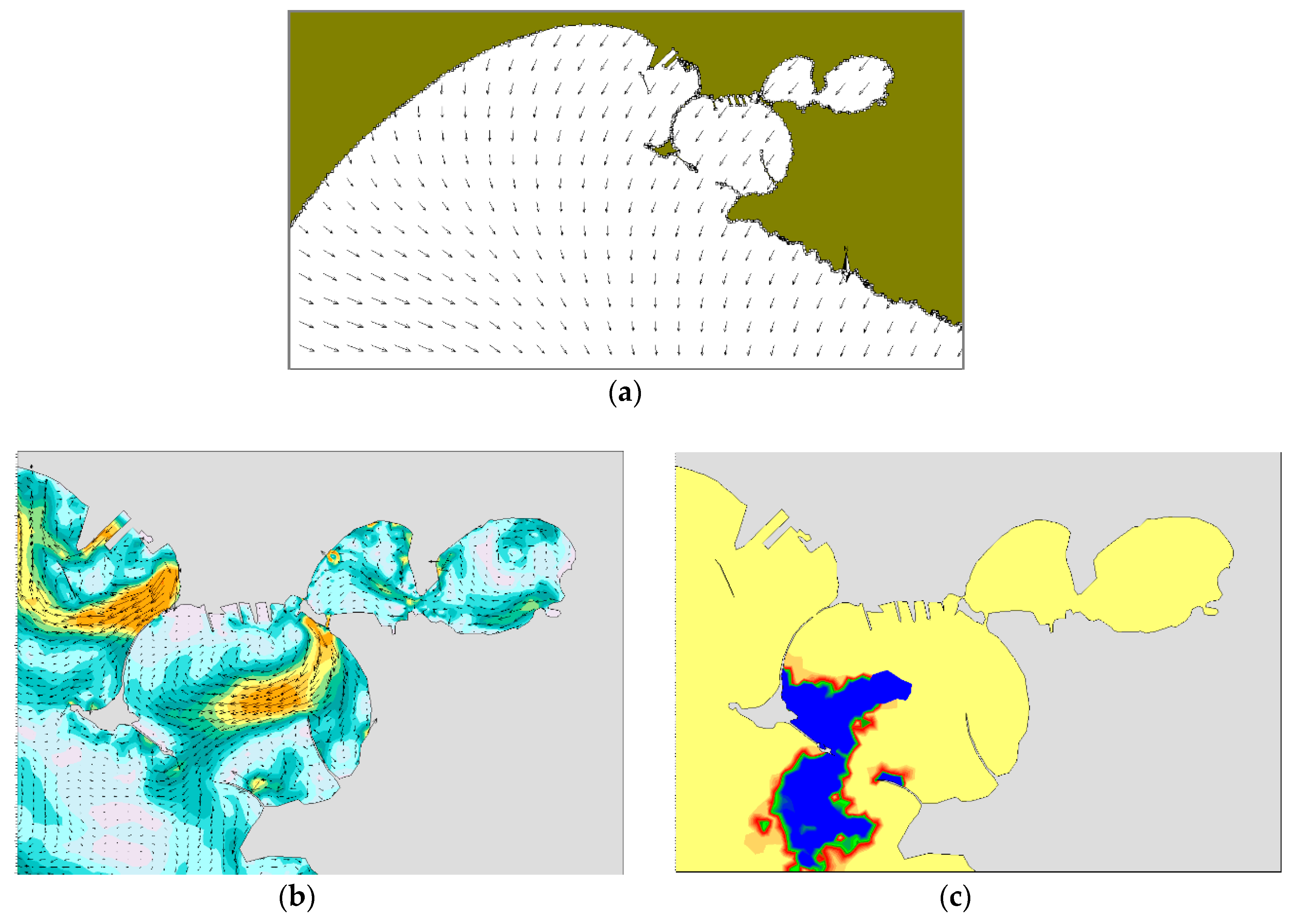

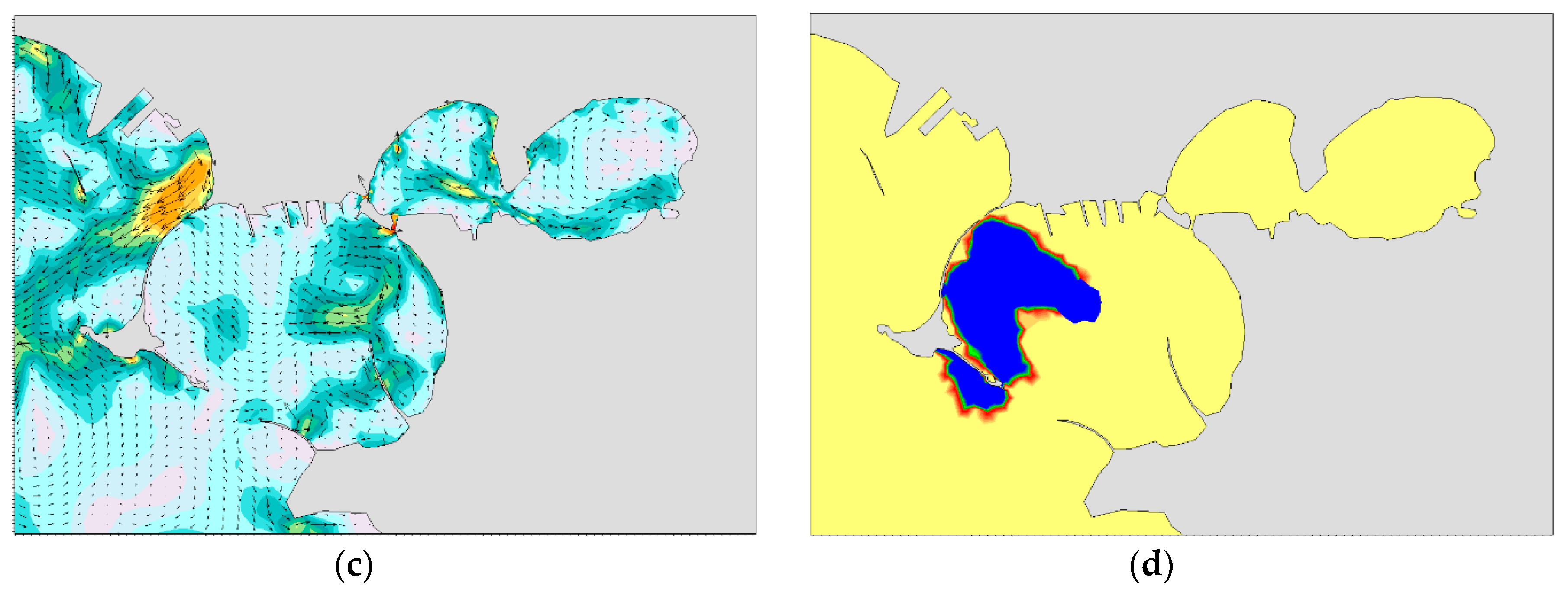



© 2019 by the authors. Licensee MDPI, Basel, Switzerland. This article is an open access article distributed under the terms and conditions of the Creative Commons Attribution (CC BY) license (http://creativecommons.org/licenses/by/4.0/).
Share and Cite
Armenio, E.; Ben Meftah, M.; De Padova, D.; De Serio, F.; Mossa, M. Monitoring Systems and Numerical Models to Study Coastal Sites. Sensors 2019, 19, 1552. https://doi.org/10.3390/s19071552
Armenio E, Ben Meftah M, De Padova D, De Serio F, Mossa M. Monitoring Systems and Numerical Models to Study Coastal Sites. Sensors. 2019; 19(7):1552. https://doi.org/10.3390/s19071552
Chicago/Turabian StyleArmenio, Elvira, Mouldi Ben Meftah, Diana De Padova, Francesca De Serio, and Michele Mossa. 2019. "Monitoring Systems and Numerical Models to Study Coastal Sites" Sensors 19, no. 7: 1552. https://doi.org/10.3390/s19071552
APA StyleArmenio, E., Ben Meftah, M., De Padova, D., De Serio, F., & Mossa, M. (2019). Monitoring Systems and Numerical Models to Study Coastal Sites. Sensors, 19(7), 1552. https://doi.org/10.3390/s19071552







